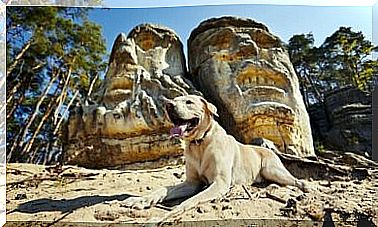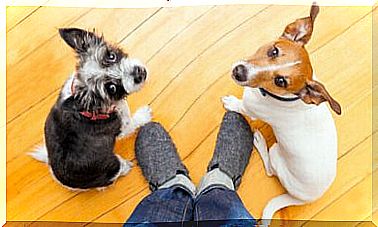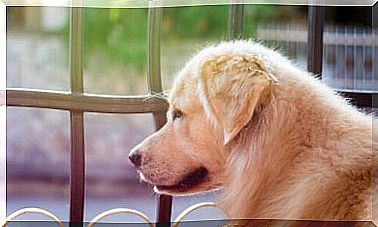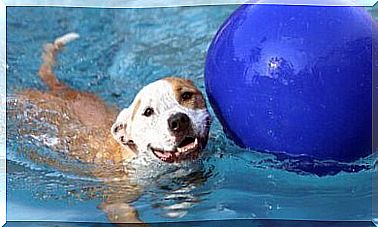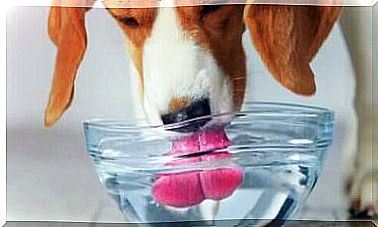Canine Arthrosis: Diagnosis And Treatment

Canine osteoarthritis is a degenerative joint disease, and is the most common cause of chronic pain among dogs. It is more common among older dogs, but can also affect overweight or obese dogs. The disease develops due to the wear and tear of the cartilage that lines the joint tissue and bones, generating loss of elasticity which produces pain and prevents the dog from moving normally. This disease must be treated immediately and the quality of life of the dog will depend on a more or less early diagnosis.
Diagnosis
Diagnosing osteoarthritis can be particularly difficult in its early stage, especially since dogs tend to shift weight to the healthy joint, avoiding putting pressure on the painful one. Precisely for this reason it will be difficult, even for a veterinarian, to notice the pain that the dog feels. Dogs often begin to limp or show any other alteration to their normal movements (such as doing their business while sitting or keeping a paw raised), but they will do so intermittently while continuing to play and run normally, this may not alarm us. during the first stage of the disease.
However, as the disease progresses and the joints deteriorate, the dog will begin to limp more frequently, depending on the severity of the arterial degeneration, will avoid moving, and will exhibit pain symptoms if the affected joint is touched. Here are other symptoms that can help you identify the presence of osteoarthritis:
- The dog moves slowly, does not want to go for walks and has difficulty following our rhythm.
- When he stops or sits, he does so slowly or takes unusual positions.
- Suffers from loss of appetite.
- Shows signs of irritability, aggression, nervousness, stress and insomnia. He doesn’t want to be touched in the areas affected by the disease.
Prevention
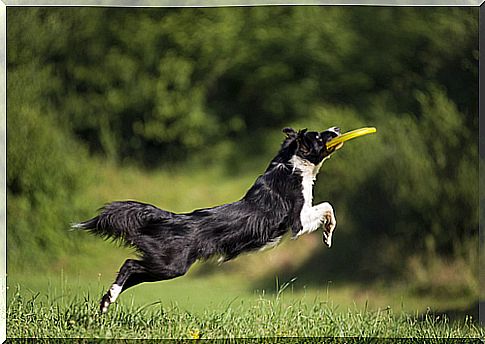
Osteoarthritis can be prevented by paying particular attention to some aspects of our pet’s life. Here are some of them:
Diet
The dog must be fed adequately, and above all it is necessary to avoid that he gains too much weight. Obese dogs put a lot of pressure on their joints, accelerating their wear. In addition, obesity causes many other problems, such as heart or kidney problems. It is necessary for the dog to eat according to its needs and energy consumption, always taking into account age, breed and size. It is advisable to supplement the diet of older dogs with vitamins, to prevent them from developing problems related to the lack of assimilation of important nutrients.
Exercise
Dogs need to exercise daily depending on their physical condition and the needs of their breed. Exercises that tone and build muscle are recommended to keep joints moving and healthy. It would be better to subject the dogs to not too hard daily exercises, instead of adding them to very tiring days with prolonged breaks from activity (for example, making them move only on weekends).
Go to the vet
You need to take your dog to the vet regularly to keep an eye on his health, especially as he begins to age. It is a very important preventive measure for all diseases and not just for osteoarthritis.
Treatment
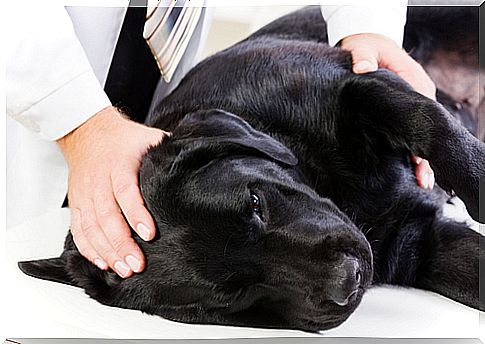
Osteoarthritis is a disease that unfortunately has no cure, however it can act on the pains that torment the dog and try to block the process of deterioration of the joints. Basically, once osteoarthritis is diagnosed, the vet will evaluate the specific situation of the dog and prepare a plan to control the disease, to prevent it from continuing to worsen, in addition , medications will be prescribed to control pain and decrease inflammation in the joints.
The first thing vets tend to treat when faced with this disease is a syndrome called central sensitization, which consists of impaired pain processing. Basically, the spinal cord produces, in front of the pain stimulus, the perception of an even stronger pain.
Normally, for this type of disease, non-steroidal anti-inflammatories are used , which considerably improve the quality of life of dogs suffering from this disease, allowing them to move and reducing pain.
In the most serious cases it will be necessary to resort to a surgical intervention that eliminates the osteophytes (abnormal bone proliferation) that obstruct the joints.
